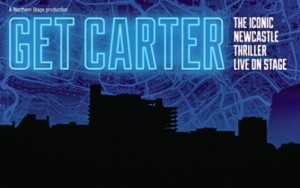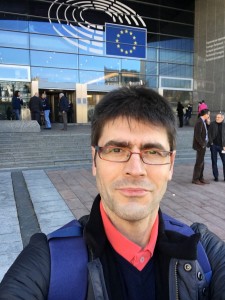This post from our recently appointed Professor of Cities Roger Burrows first appeared on the LSE impact blog as part of a series on the Accelerated Academy.
In it he asks: have academics ever worked in an environment free from ‘measurement’?
A few years ago I wrote a paper for the Sociological Review – ‘Living with the H-index? Metric Assemblages in the Contemporary Academy’ – which made, I think, six points:
- The emergence of a particular ‘structure of feeling’ amongst academics in the last few years has been closely associated with the ‘autonomisation’ of metric assemblages from auditing processes in the academy.
- Whereas once metrics were simply part of auditing process and, as such, functioned to ensure accountability they have, in more recent times, taken on another role, and now function as part of a process of, what has been called ‘quantified control’.
- In essence academic metric assemblages are at the cusp of being transformed from a set of measures able to mimic market processes to ones that are able to enact market processes.
- In the neoliberal university world of student fees and ever-greater competition for student numbers and research grant income, these metrics function as a form of measure able to translate different forms of value.
- Academic value is, essentially, becoming monetised, and as this happens academic values are becoming transformed.
- This is the source of our discomfort. However, it is not just that we might have some political objections to these value transformations. The root of the issue if that we are fully implicated in their enactment.
The paper seemed to strike a chord. Copies were distributed well beyond the domain of my discipline and well beyond the shores of the UK. I received many emails from academics I have never met telling me how useful they had found the analysis; some even seemed to find it cathartic. Ironically, it quickly became one of my most highly cited papers. I was asked to speak to the analysis at a number of events and was even flown across to Australia to do a mini-lecture tour on the topic. You can hear me talking at one such event at the University of Sydney here (audio mp3).
However, one major objection to my analysis keeps coming up. Surely I am romanticising the world we have supposedly lost? Was it ever really the case that UK-based academics worked within an environment that was largely beyond ‘measure’? I have worked in the academy for more than 30 years now and can certainly recall such a time. Even when the first stirrings of the audit culture appeared the demands were pretty ‘light touch’. Those colleagues already gearing up for the next REF in 2021 and all the organisational paraphernalia that entails might find the requirements for the first such exercise in 1986 – what was then called the Research Selectivity Exercise (RSE) – enlightening?
Each subject area had to submit a ‘research profile’ of no more than 3 pages of A4 showing: indices of any financial support of staff; staff and research student numbers; any measures of research performance deemed significant; a statement of current and likely future research priorities; and the titles of no more than 5 books or articles produced since 1980 considered to be typical of the best research produced. Now just to be clear that is 5 books or articles FOR THE WHOLE DEPARTMENT! The ‘results’ published on the 27th May 1986, to very little interest or, indeed, understanding, classified the evidence presented in these 3 pages as: ‘outstanding’; ‘better than average’; ‘about average’; or ‘below average.
Of course one can point to any number of studies of the academy that demonstrate just what a different world it all was. As De Angelis and Harvie in their utterly superb 2009 paper, “Cognitive Capitalism” and the Rat-Race: How Capital Measures Immaterial Labour in British Universities published in Historical Materialism, observe, academic accounts of the life-world of the post-war University, as contained within studies such as Halsey’s Decline of Donnish Dominion and even Slaughter and Leslie’s Academic Capitalism, all concur that:
‘measure in any systematic form, with accompanying material consequences…[is]… new. Measure, as we would now recognise it, simply did not exist in the post-war university’.
Confirmation of this could come from any number of different sources but perhaps the most affecting is that contained within campus fiction. We are fortunate to have a wonderful book-length sociological analysis of this genre. Ian Carter’s Ancient Cultures of Conceit, published in 1990, examines the post-war campus novel up to 1988. The fictional life-worlds of the academy that it sets out to analyse are ones that many readers will not only recognise but also, perhaps, feel a guilty nostalgia for? The academic world described in The History Man (Bradbury, 1975) or Coming From Behind (Jacobson, 1983) will be familiar to many older readers. The impact of Thatcherism is brilliantly dissected not only by David Lodge in Small World (Lodge, 1984) and Nice Work (Lodge, 1988), but also in the volumes by sociologist-cum-novelist Frank Parkin such as Krippendorf’s Tribe (1985) and, especially, The Mind and Body Shop (1987).
Although published almost a decade after the Carter volume, the world of campus fiction caught up with the beginnings of metricisation with the publication of Overheads by Ann Oakley (1999) – another sociologist-cum-novelist. Much of this book is concerned with the tussle that the main protagonist, Professor Lydia Malinder, has with colleagues over the introduction of a new mechanism for workload allocation; the development of Teaching and Research Units (TRUs) as a crude attempt to reduce all aspects of the academic labour process to a common metric. Compared to the lived reality of the huge assemblage of various technologies of measurement to which we are now subject, the fictional battle over TRUs now appears somewhat inconsequential. However, it does provide a rough date from which concerns with the power of metrics are deemed significant enough to warrant comment in the sphere of fiction.
The metricisation of the UK academy is not a topic that has been sustained in more recent campus fiction. If one wants fictional insight to such matters one now has to turn to social media. The simply excellent Department of Omnishambles blog- – is well worth a visit as are the ramblings of the (now retired it seems) @academicmale on Twitter. There are others as well that provide humour and not a little insight in to the current conditions of academic labour.
This post is based on the author’s contribution presented at Power, Acceleration and Metrics in Academic Life (2 – 4 December 2015, Prague) which was supported by Strategy AV21 – The Czech Academy of Sciences. Videocasts of the conference can be found on the Sociological Review.
Note: This article gives the views of the author and not the School of Architecture, Planning and Landscape or Newcastle University.




